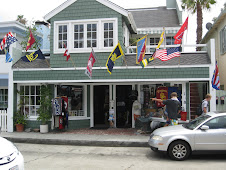 It’s only natural to get swept up by the allure of products marketed as “natural.” We resonate with that term for a number of reasons: it implies pure, unadulterated goodness. It sounds comforting. There’s an ease—a lightness implied to it. And above all else, we associate it with being healthy for us.
It’s only natural to get swept up by the allure of products marketed as “natural.” We resonate with that term for a number of reasons: it implies pure, unadulterated goodness. It sounds comforting. There’s an ease—a lightness implied to it. And above all else, we associate it with being healthy for us.
But when it comes to food, we know nothing is more “natural” than something growing in our backyard vegetable garden, yet we take solace and comfort in foods that appeal to our desire for “natural.” But nowadays we’re learning the consequences of that term all to well.
For starters, if a food is marketed as “natural” it probably isn’t. It’s more likely to have been processed—spending more time inside a factory than it ever did on a farm. Lawsuits have challenged the credibility of “natural” claims, and while that has put pressure on manufacturers to use the term more accurately (or not at all), it says nothing of the pressure on organic farmers.
Companies marketing “natural” products merely pay lip service to sustainability and eco-friendliness, while undercutting the truly committed organic companies that walk their talk by buying from farms that are managed organically, without synthetics and pesticides, non- therapeutic antibiotics and hormones, and sewage sludge.
Committed organic companies also have to compete with “natural” claims by companies (such as Annie’s Homegrown and Weetabix/Barbara’s Bakery®) that are reducing their organic options. These companies, too, are blurring the lines between organic and “natural,” apparently to ride the coattails of their established organic reputations while cashing in with cheaper conventional ingredients.
When food manufacturers shift their product ingredients from organic to “natural,” it means they buy conventional ingredients from chemical-intensive farms instead of buying from organic farmers. As a result, less demand means organic farmers receive lower prices for their grains. For the first time since the commercialization of organics, conventional farm production is probably more profitable than organic.
Since 2008, multiple manufacturers have switched a considerable share of their products from organic to “natural.” This is a reversal of a decades-long trend. Simultaneously, organic grain farmers have noticed a drop in demand for organic crops, accompanied by a drop in prices for these crops.
Many farmers who invested heavily in converting their land to organic production (a minimum three-year process) have converted back to conventional. If demand for organic crops had remained high, many more acres may have converted to or remained organic but now are back under chemical-intensive management. While there are certainly other factors to be considered, such as weather and higher conventional prices that lured some organic farmers back to conventional, the role of decreased demand for organic grain by companies that switched from organic to “natural” cannot be underestimated.
Organic farmers focus on building soil fertility using natural means, such as crop rotation and composted livestock manure, instead of using synthetics. Organic farmers also are prohibited from using municipal sewage sludge, which is allowed and used by conventional farmers producing crops for “natural” foods (sewage sludge is commonly contaminated with heavy metals and toxic chemicals). While petroleum- based fertilizers provide quick, short-term boosts to plant growth, organic farmers aim to nurture the long- term health of the soil, to ensure that the land will remain fertile for the next generation.
To manage pests, organic farmers seek a balanced farm system, using crop rotation, beneficial insects and birds that eat pest insects, and hands-on management instead of resorting to toxic, persistent pesticides. Pesticides that kill “pest” insects are known to be harmful to non-target species such as bees, butterflies, birds and other wildlife. Pesticides used on a farm are not easily contained, and inevitably contaminate aquifers, streams and rivers, eventually finding their way into drinking water resources.
Thousands of cases of acute pesticide poisoning among farmers and farmworkers on conventional farms have been documented, and all easily would have been prevented with organic farming practices. Studies suggest that farming communities have higher rates of leukemia, non-Hodgkin lymphoma, multiple myeloma, and soft tissue sarcoma, as well as cancers of the skin, lip, stomach, brain, and prostate.
According to the National Cancer Institute, these higher cancer rates “may be related to exposures that are common in their work environments” such as pesticide exposure. Research also links the use of common herbicides to higher rates of birth defects in farming communities.
Organic farming also benefits the environment in terms of global climate change, since organic farmers use fewer fossil-fuel-based inputs, and healthy organic soil sequesters carbon. According to the Rodale Institute, a Pennsylvania-based organic research and advocacy organization, converting 50% of U.S. agricultural farmlands to organic production would sequester 240 billion pounds of carbon per year, the equivalent of removing up to 42 million cars from the road.
In 2008, an intergovernmental panel, supported by organizations such as the World Bank and the United Nations, reported that organic management of food production is the most sustainable way to feed the world.
While some food companies no longer pay a price premium to farmers for organic ingredients, they continue to charge price premiums to consumers in the marketplace for their “natural” products.
Consumers who buy certified organic foods support an ecologically sustainable food production system, which means they support wildlife conservation, the building of soil fertility, and the sustainability of our farmland. They also protect the farmers and farmworkers (and their families) who produce our food. Buying “natural” products, on the other hand, means supporting the environmentally destructive industrial model of agriculture.
From the Cornucopia Institute
May 24. 2014



















